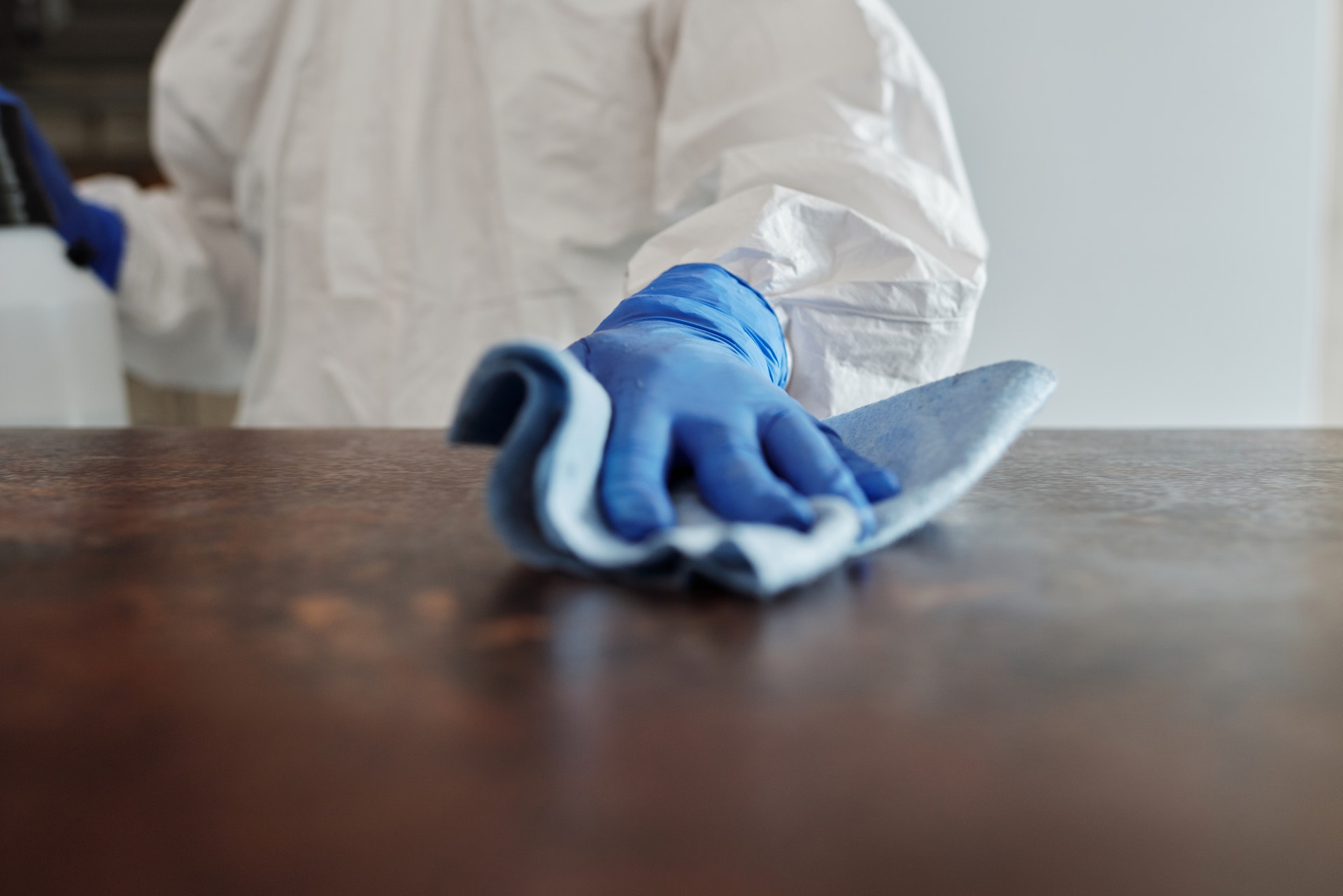A common consideration among Toronto landlords, particularly those offering short-term rentals, is the amount of time and effort involved in cleaning the property between renters.
Many rental owners start out managing their own properties because they think they have time to do so, but later consider the inconvenience of a cleaning schedule dictated by the seemingly random schedules of short term renters. Your rental unit must be ready for the next group of customers on their schedule or you risk having to cancel the rental entirely, rush across town to do the job at odd hours, or miss out on other activities. Now in the age of COVID, property owners and renters alike have many questions about the cleaning process and safety of a high turnover rental unit.
The Centers for Disease Control (CDC) guidelines for cleaning and disinfecting building facilities are a good guide to cleaning between renters, and of course there will be other considerations such as doing a contactless key handoff.
Let in Fresh Air
One of the best ways to mitigate COVID infection risk is exchanging the air in a unit with outdoor air. This means opening windows and doors to rooms otherwise sectioned off from a natural air flow. The practice of letting in fresh air while cleaning goes without saying – in the warm summer months, it’s practically second nature to open up any unit while dusting or using cleaning products. In winter months, however, we naturally do all we can to keep the heat inside a unit. When it’s -15oC and windy outside, an open window just feels intrinsically wrong and the average person avoids letting in the cold air outside at all costs.
The reality is exchanging the air in any dwelling takes a very short time, and overall the cost of re-heating the air in a unit is almost completely negligible. The idea is to get the old air out and fresh air in and often this can be done in only a couple of minutes.
I Found Out My Last Renter May Have COVID-19?
If a renter is diagnosed or suspected to have COVID-19, the CDC recommends opening doors and windows and waiting 24 hours (or as long as possible) before beginning the cleaning process. Fresh air is the first step in mitigating risk of COVID transmission in these situations. Also, any space that sits for 7 days does not require additional cleaning procedures to eliminate COVID-19. If the space happens to be unoccupied for a week, waiting that week before beginning cleaning and disinfecting is the best way to protect yourself and future renters from the risks of COVID.
It’s also important to consider the exhaust from any vacuums used in the cleaning process. For that reason, vacuums with a HEPA filter are strongly recommended. Vacuuming while the rental unit is open to outside air and wearing appropriate personal protective equipment while cleaning are also very important considerations. Most importantly, do not vacuum any space while people are inside of it – vacuuming should be a one person job while the rental is empty and, if possible, open to outside air.
Tackle areas which the affected person definitely used first, such as the bathroom and bedroom. While all areas should receive equal attention in practice, a bathroom is going to require considerably more washing and disinfecting than an unused hallway closet or the space between a stove and the wall. Be practical to ensure that corners are not cut as a result of fatigue.
Soap and Water destroy COVID-19
The Centers for Disease Control recommends washing all visibly dirty surfaces. While this sounds simple enough, many cleaning products are meant to be used independently on the surfaces they treat. The average person often tackles cleaning with a range of products that each do their part in the total job – things like disinfectant spray, floor cleaner, bathtub and cleaner, toilet bowl solutions, etc. When everything smells like lemon and chlorine, we usually feel that it’s sterile.
The reality is that nothing kills the COVID-19 virus faster than soap and water, so the CDC recommends a two-step approach to each dirty surface. Yes, chlorine bleach and strong cleaning products will disinfect and sterilize, however, in practice these products don’t necessarily get 100% coverage on all surfaces, particularly when those surfaces have visible dirt or grime that will be moved around with wiping. Soap and water is the fastest, most thorough way to clean visible dirt. After surfaces have been clean, ensure sterilization by applying an adequate bleach solution (⅓ cup per gallon of water) or an adequate disinfectant as categorized by the U.S. Environmental Protection Agency (EPA).
Laundry
It’s important to clean any sheets, pillowcases, and soft laundry items that may have been used by renters. Collect them with a minimum of jostling (wearing adequate PPE if at all possible), wash them on the warmest setting possible, and ensure that they come into contact with soap and water. If you’re using a high efficiency washer or dryer set, we recommend using wash settings that employ more water. Lastly, wash and disinfect the hamper used to collect the laundry or remove it from the unit for the time being.
Running out of Time?
If you find yourself racing against the clock to have a rental unit sterilized and ready for the next set of renters, don’t hesitate to call and postpone their arrival. In today’s climate with the fears surrounding COVID-19, very few people wouldn’t appreciate that extra attention is being given to clean and disinfect a space they are going to occupy.
Do you want your Toronto property handled professionally both during and after the pandemic? Contact HighGate Properties today to find out more about our professional property management services and how our team cleans and disinfects between renters and, most importantly, ensures that you always have the right renters in the first place.





